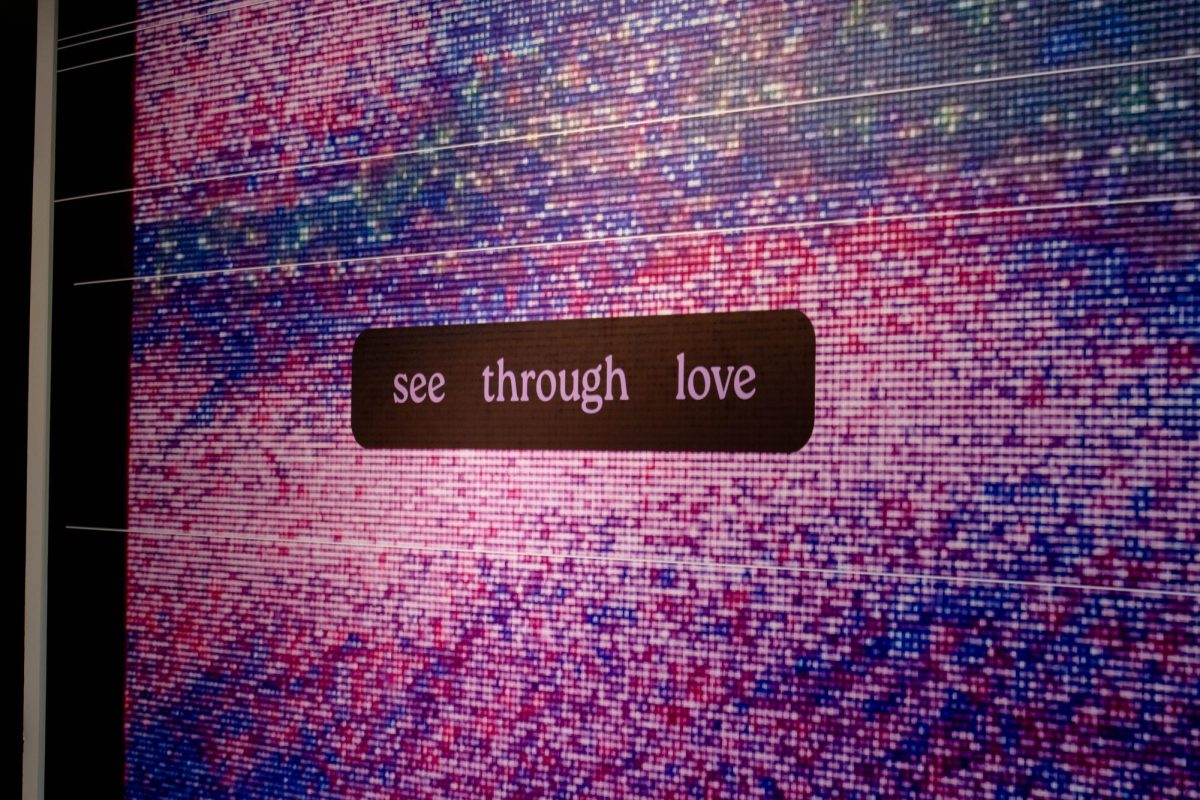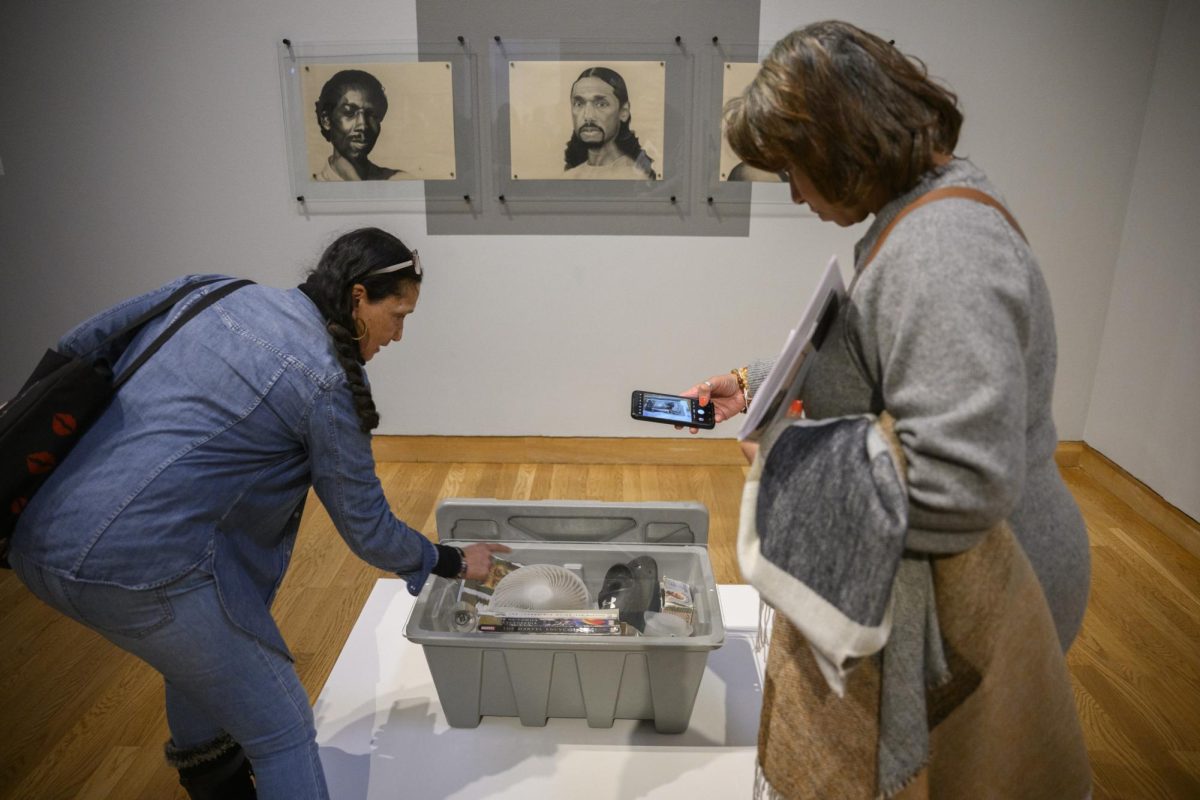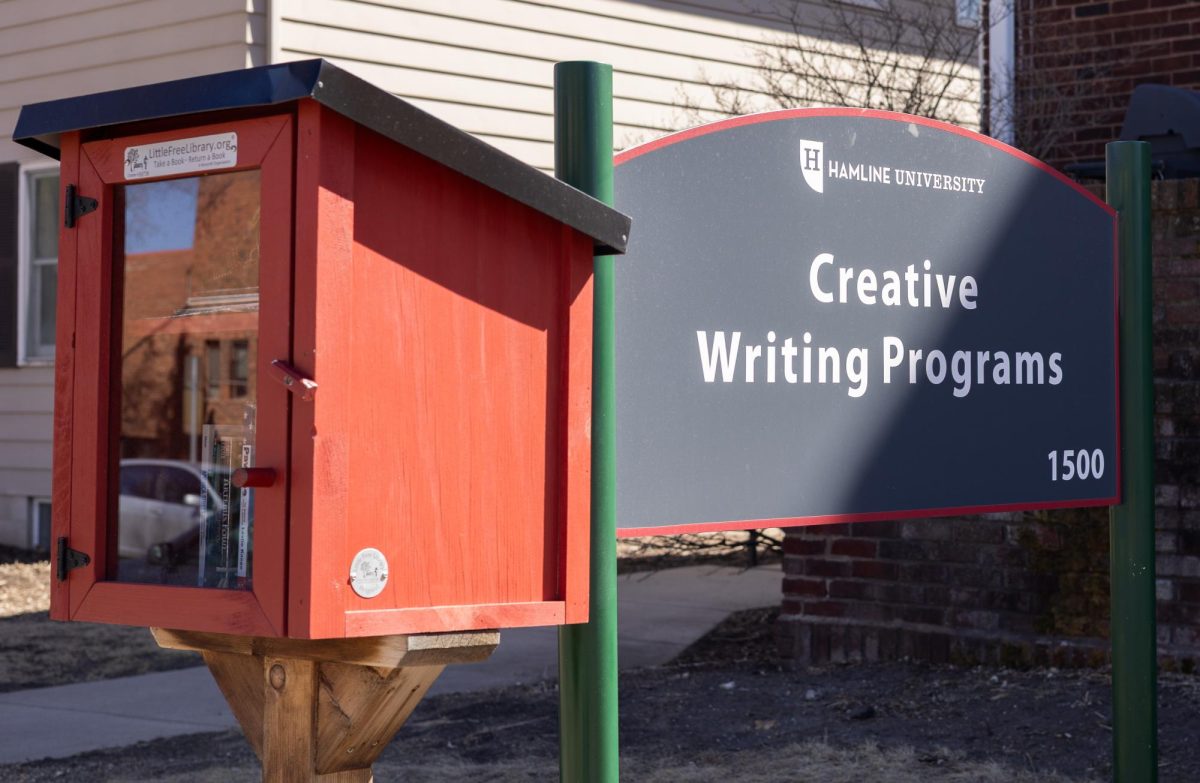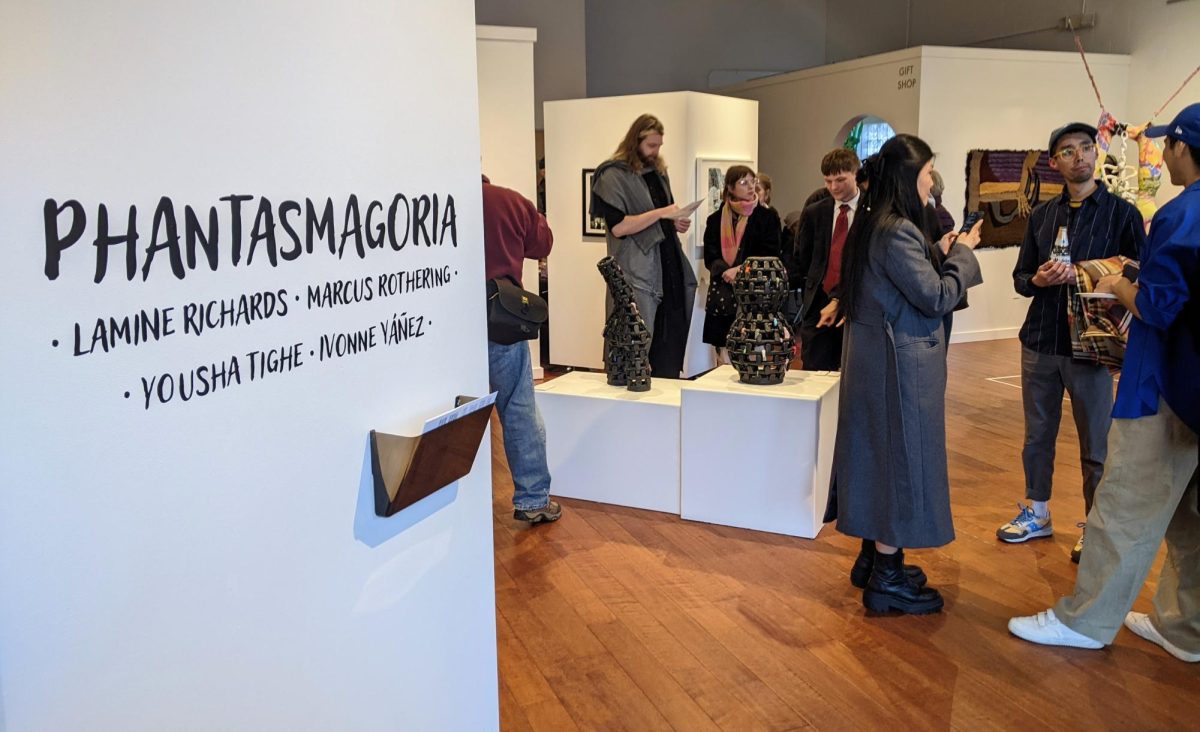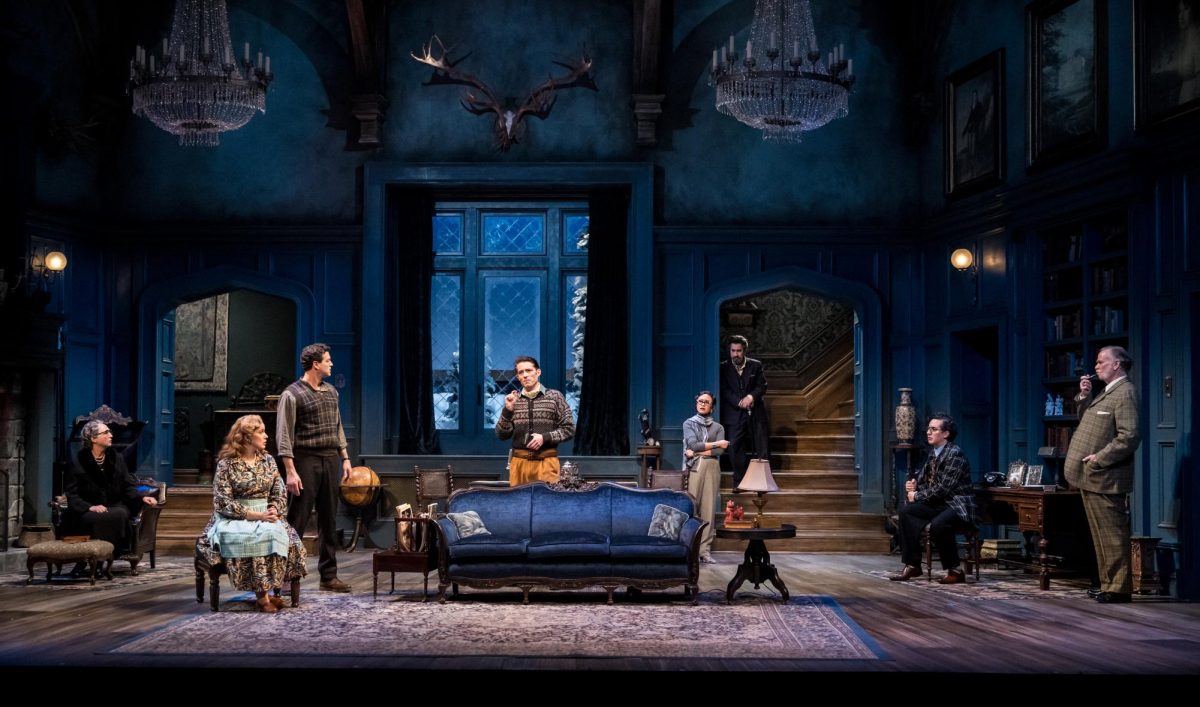How is surgery similar to being in love? Is there love hidden underneath our eyelids? Is it on a riverbank both immersed in and removed from time? In the numbers that make up a digital photo’s lights and darks?
How many ways are there to see through love?
These are the questions the University of Minnesota Master of Fine Arts class of 2025 asks in their thesis exhibition “see through love.” The exhibition is open in the Katherine E. Nash Gallery in the Regis Center for Art until April 19.
The exhibition takes the form of a maze, winding through the works of the cohort’s seven artists that explore how each of them uses love as a lens to process the precarity of life.
“To see through love is to see with the wide-open and receptive eyes of your own heart,” the artists wrote in their artists’ statement.
“See through love” references a 1994 song by the late musician Arthur Russell, a moody yet driving track with sparse electric guitar befitting an end credits scene.
The exhibition consists of both interactive scenes and traditional forms of art such as paintings and photographs, but even those traditional works push creative and spatial boundaries.
The paintings of Sarah Hubner-Burns, for example, are gargantuan oil paintings of organic pastel chaos, the smell of the paint emanating from the canvas. In “Auto-fauna,” rich yellows, purples and oranges explode across a lavender backdrop.
Certain shapes are perceptible through the paintings — a face, an eye, anemone, hands, feet, teeth, the female form. They are what Hubner-Burns calls “shy forms,” or “what hasn’t learned how to be seen.”
Roya Nazari Najafabadi’s acrylic paintings possess a similar melting quality accentuated by shiny textural globs of paint. Her paintings examine women’s liberation in both her home country of Iran and the U. S., showing how women are hidden, melted down and censored.
Two laser-cut wooden figures of women stand in front of the paintings, sturdy and corporeal. One raises one fist in resistance, the other raises both in celebration. Attached to them are rectangular screens of text in Farsi.
The figures emerge from the melting down of women depicted in the paintings, showing Najafabadi’s artistic range and thus accentuating that of her fellow artists.
The most outrageously delightful works of the show are Marcus Rothering’s tufted tapestry rugs and signature ceramics. Explicit gay sex scenes celebrate Black queer love and domesticity in all of its tenderness, weirdness and mischief.
The interactive wings of “see through love” embody the exhibition title by showing how each artist’s worlds are defined by love.
One is greeted by alter hajek’s “waiting room” scene upon entering the Nash Gallery, a lace ribbon cordons off the second half of the wing, which only one person or two people who love each other may enter if the ribbon is open.
Ample reading material is available while waiting, a poetic novel connecting Sappho, surgery and love.
Anna Clowser erected portals of cloth and steel wire to recreate a Mississippi riverbed in Iowa, which is their true home according to signage. Papier-mache sound vessels may be carried throughout the space and everything may be touched, implicating the viewer in interwoven strands of time and place.
Sarah Abdel-Jelil recreates the Earth’s breath with colorful, kaleidoscopic visuals and immersive audio. Justin Allen draws a throughline between the stars, the moles on his back and his dad’s death of skin cancer through handmade books, altered photographs and a video explanation of the constellation Cancer.
Each of the artist’s constructed spaces are a testament to the intimacy, tenderness and unity that persists between them and within each of their lives both inside and outside of art.
During the artist talk before the gallery reception Saturday, Clowser read complimentary descriptions the artists had written about each other. She laughed self-consciously as she read her own, which described her as a beacon of joy that kept everyone on task.
A lot can happen in the three years it takes to obtain a Master in Fine Arts from the University. According to the artists, this period of time is transformative both creatively and personally. The results of this year’s cohort’s transformation is nothing short of complex, inspiring and, ultimately, loving.


